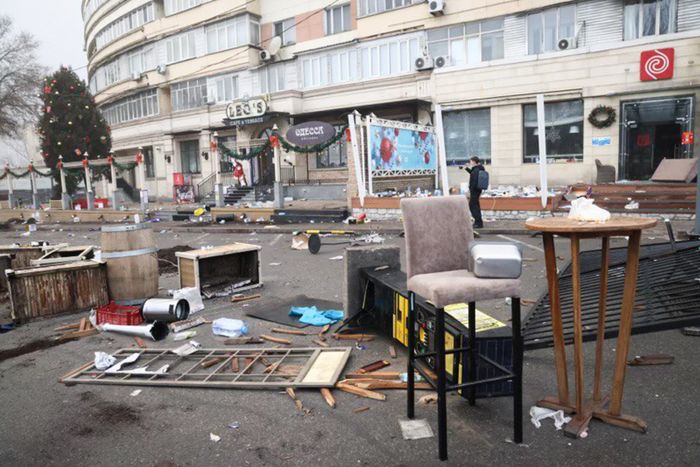Instability in Kazakhstan, the world’s biggest uranium producer, threatens to curb output and boost prices at the same time supplies of the nuclear fuel are becoming tighter.
Traders and Western mining companies say the protests might make it difficult to transport workers and equipment to mine sites when shifts rotate, and could gum up exports out of the country.
Kazakhstan, a Russian ally, produces about 40% of the world’s uranium output and sells it to utilities in the U.S. and other Western countries, as well as China. It has established a reputation as a reliable supplier.
Uranium prices have jumped since the protests erupted Sunday in Kazakhstan’s western Mangistau region over rising energy prices, prompting the government to resign. A lightly processed form of uranium known as U3O8 was expected to change hands above $46 a pound on Thursday, traders said. That is up from $45.25 on Wednesday and $42 at the start of the year.
The protests pushed crude-oil prices higher, too. Kazakhstan is a member of the OPEC+ alliance and produced about 1.7 million barrels of oil a day in November, according to the International Energy Agency, just under 2% of what the world consumed each day last year.
Chevron Corp. , which owns 50% of the joint venture that runs Kazakhstan’s Tengiz oil field, said it had cut production after protests in the facility.
“Production operations continue, however there has been a temporary adjustment to output due to logistics,” a Chevron spokeswoman said. “A number of contractor employees are gathered at the Tengiz field in support of protests taking place across Kazakhstan.”
The unrest could affect uranium deliveries if it isn’t resolved quickly, traders and mining companies said. Most mining in Kazakhstan is carried out via a process called in-situ leaching that requires a steady supply of pipes to line wells that are drilled in the ground, as well as sulfuric acid to pump uranium to the surface.
The instability struck at a vulnerable time for uranium markets. Prices are more than 50% higher than they were 12 months ago, according to UxC LLC. The upswing ended a long downturn sparked by the Japanese reactor meltdowns in 2011, which led Japan and Germany to close nuclear-power stations, eroding demand.
Shares of National Atomic Co. Kazatomprom JSC, the state-owned uranium miner, fell 6.7% in London on Thursday.
Planned deliveries to customers haven’t been interrupted yet because the miner keeps six to seven months’ worth of uranium in inventory around the world, a Kazatomprom spokesman said by email. “Of course there’s going to be an impact when you have cities and towns in lockdown, limited telecommunications, and a financial system temporarily shut down,” he added.
Supplies have winnowed down in part because investors have bought the fuel in a bet governments will embrace nuclear energy to plug carbon emissions. Kazatomprom and Canada’s Cameco Corp. , the second-biggest producer, have cut output to drain the glut that emerged after Japan’s Fukushima nuclear-plant disaster in 2011.

A city street in Almaty, Kazakhstan, was littered with debris Thursday following unrest over an increase in fuel prices.
Photo: Valery Sharifulin/Zuma Press
Cameco, which owns 40% of a joint uranium venture with Kazatomprom at Inkai, in central southern Kazakhstan, couldn’t communicate with its employees there for a time when the internet went down, a person familiar with the matter said. The company has re-established contact with its team. Logistical difficulties could reduce production, the person said.
Nuclear reactors, run by utilities that typically buy uranium years in advance, won’t immediately take a hit from rising prices. But reliance on Kazakh and Canadian uranium might lead utilities to diversify their supplies, said Arthur Hyde, partner at uranium-focused hedge fund Segra Capital Management.
“Over the past 15 years, Kazakhstan has been an unbelievably stable supplier,” Mr. Hyde said. “If Kazakhstan is starting to be viewed as less stable, there aren’t a lot of places to go.”
—Benoit Faucon contributed to this article.
Write to Joe Wallace at [email protected]
Copyright ©2022 Dow Jones & Company, Inc. All Rights Reserved. 87990cbe856818d5eddac44c7b1cdeb8








